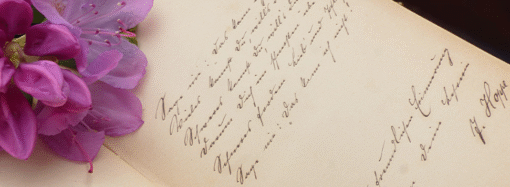It’s generally accepted that early Christians adopted December 25th as the day of Christ’s birth to co-opt the pagan celebration of the winter solstice. Some believe this fact undermines Christianity.
But according to Professor William Tighe, this “fact” may actually be a myth.
Based on his extensive research, Tighe argues that the December 25th date “arose entirely from the efforts of early Latin Christians to determine the historical date of Christ’s death.” He also goes so far as to claim that the December 25th pagan feast of the “’Birth of the Unconquered Sun’… was almost certainly an attempt to create a pagan alternative to a date that was already of some significance of Roman Christians.”
Tighe explains…
In the Jewish tradition at the time of Christ, there was a belief in what they called the “integral age”—that the prophets had died on the same days of their conception or birth. Early Christians spent much energy on determining the exact date of Christ’s death. Using historical sources, Christians in the first or second century settled on March 25th as the date of his crucifixion. Soon after, March 25th became the accepted date of Christ’s conception, as well.
Add nine months—the standard term of a pregnancy—to March 25th, and Christians came up with December 25th as the date of Christ’s birth.
It is unknown exactly when Christians began formally celebrating December 25th as a feast. What is known, however, is that the date of December 25th “had no religious significance in the Roman pagan festal calendar before Aurelian’s time (Roman emperor from 270-275), nor did the cult of the sun play a prominent role in Rome before him.” According to Tighe, Aurelian intended the new feast “to be a symbol of the hoped-for ‘rebirth,’ or perpetual rejuvenation, of the Roman Empire…. [and] if it co-opted the Christian celebration, so much the better.”
As Tighe points out, the now-popular idea that Christians co-opted the pagan feast originates with Paul Ernst Jablonski (1693-1757), who opposed various supposed “paganizations” of Christianity.
Of course, to Christians, it really doesn’t matter that much whether or not they co-opted December 25th from the pagans, or vice versa. The Christian faith doesn’t stand or fall on that detail. But it’s nevertheless valuable for all of us to give closer scrutiny to shibboleths—such as that of the pagan origins of Christmas—which are continually repeated without being examined.
—
This article was originally published by Intellectual Takeout on November 24, 2017.
Image credit: Public Domain Pictures-Petr Kratochvil, CC0 1.0
17 comments















17 Comments
Stephen T.
December 24, 2022, 1:22 amOur December 25th and the supposed December 25th in ancient Rome did not coincide at all. The calendars are very different. Much of this nonsense comes from the thoroughly discredited Alexander Hyslop and his "Two Babylons" that uses conjecture as evidence because there exists zero historical evidence of any of his claims. Was Jesus the Christ born on our December 25th? Who cares? He WAS born, He DID live, and DID He suffer, then die on a cross, getting what we all deserve. And then, most importantly, He walked out of his grave in the very body He died in, three days later, PROVING He defeated His death, so He can defeat yours and mine, too. Happy Christmas!
REPLYTerry C@Stephen T.
December 29, 2022, 12:37 amWell said, Stephen. Glory to Christ!
REPLYJackson Pemberton
December 24, 2022, 2:06 amIt is interesting that so many important dates in Christianity fall on the equinoxes or solstices or within 2 or 3 days of them at least.
REPLYLP@Jackson Pemberton
December 23, 2023, 10:37 pmThe Romans were the wrong pagans:
https://www.britannica.com/topic/Yule-festival
REPLYRoberta
December 24, 2022, 2:24 amJesus said, remember my resurrection. No place did HE say remember my birthday.
One just might find clear understanding backed up with biblical facts when you listen to JOHNATHAN CAHN give clear and concise detailed explanation as to Jesus birth and death.
Simply put
Jesus birth, death and resurrection represents
NEW LIFE.
NEW LIFE
is in the springtime.
Therefore, it’s most likely HIS birth , death and resurrection would coincide with this same time of year.
Pertinent facts are made quite clear through Jonathan’s intelligent understanding and explanation of scripture.
Truth is so freeing and refreshing.
Everything that feeds and stimulates the senses during these pagan holidays is non existent for those who no longer partake.
It is my hope and prayer that THE CHURCH begins to share TRUTH (which they do know) with their flock.
Think for a moment what is observed during these so called times of celebration…………
materialistic
Loneliness
Unrealistic expectations/unfulfilled
Depression
Drunkenness
DEBT
Selfishness
Etc…………,
For greater insight and a wealth of knowledge……….
REPLYJohnathancahn.com/youtube
Oscar
December 24, 2022, 3:37 amNot very convincing, the sun reaches it lowest point every year on December 22 and "dies" for three days not getting any higher then on the 25th of December it is reborn.
The word solstice is a combination of two Latin words – ‘sol’ meaning sun and ‘sistere’ which means to stand still. The sun gets to its most southerly point and appears to stand still before moving upwards again.
For approximately three days, the sun appears to remain stationary in the sky before beginning its journey upwards again. Since ancient times this stationary sun represented death before its rebirth as it began moving up again. The winter solstice has been celebrated for thousands of years.
REPLYDavid Sparkman
December 24, 2022, 5:34 amShepard’s tending their flocks by night suggests a rather warmer night than the middle of winter. I will go with the pagan theory. Under Constantine, Christianity was weaponized to replace Celtic religious practices resulting in Christian Churches being built over previous Celtic worship sites. It solved the problem of troublesome Celtic rebellions against Roman rule. With a state authorized religion, it became necessary to supplant pagan feast days as well. Easter is more fixed as we have a Jewish holiday attached to the event. Of course the Jewish calendar does not coincide with our 365 1/4 day calendar but is Lunar based so there is some disparity. It has also been suggested that Psalm Sunday coincided with the High Priest declaring the beginning of planting season (first sign of Hops growing).
REPLYTionico@David Sparkman
December 24, 2022, 7:42 amConstantine was ruling in the early 300’s. The Celts, or Irish, were all but unknown and certainly not relationg to much outside of Ireland until Patrick went there in the 400’s, after Constantine. So your time warps do not match up well at all. Even if your timeline IS correct, the celts were a very insignificant factor even in later times after Constantine. They did not begin to be much of a factor until perhaps into the 800’s as the roman church began to gain political power and really rule Europe.
REPLY